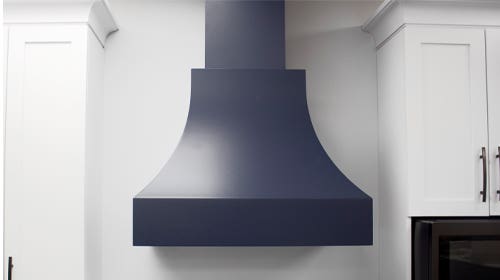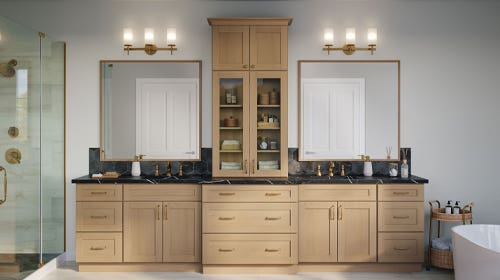Small market for woodworkers pops up
Professional woodworkers wishing to expand their business might want to consider going very tiny or not-so-big. These phrases are part of a growing movement in housing toward smaller homes. To…
Professional woodworkers wishing to expand their business might want to consider going very tiny or not-so-big. These phrases are part of a growing movement in housing toward smaller homes. To some in this movement, small means under 500 sq. ft., even as small as 90 sq. ft. To others, it means downsizing, or right-sizing, from a 4,000-sq.-ft. McMansion to a beautifully designed 2,000-sq.-ft. home.
“Woodworkers are perfectly positioned to serve this market,” says Sarah Susanka (www.sarahsusanka.com), an architect many credit with starting the movement to smaller homes with the publication of her book, “The Not So Big House” (Taunton), in 1998. The movement, with no surprise, gained momentum since the housing crisis that began in 2008.
“In the current economy, there are a lot of new believers,” adds Susanka. “They are very much aware in today’s uncertain environment that it’s better to have a house that’s right-sized, rather than oversized.”
To Susanka, right-sized means “not as big as you thought you needed, with available dollars reappointed out of square footage and into quality and character.” This is where woodworkers come in. Many of the clients attracted to her message, according to Susanka, are “also discerning consumers of craft.” Thus, the extra cash is often spent on custom cabinets, millwork and furniture, she says.
In her own experience as an architect, she has worked with “some incredibly talented woodworkers” on her residences. To that end, she says that it could be profitable for woodworkers to meet with local residential architects, if they haven’t already, and show them their portfolio.
There are a growing number of architects and builders getting on board the small-house movement, as evidenced by a list of resources at the Small House Society (www.resourcesfor life.com/groups/smallhousesociety). According to its website, the society is “dedicated to the promotion of smaller housing alternatives which can be more affordable and ecological.” Gregory Paul Johnson, the co-founder and coordinator, also agrees that there is a growing movement in this direction. In a video on the site, he talks about the increased number of websites, architects and builders who advocate a more right-sized home. He also notes that the society’s website now gets about 7,000 hits a day, compared to about 100 when the society began in 2002.
The site climbed to 30,000 hits a day after another advocate of the movement, Jay Shafer, was the focus of a story on small homes that recently appeared on Yahoo’s home page. Shafer is the owner of Tumbleweed Tiny House Co. (www.tumbleweedhouses.com) in Sebastopol, Calif. Shafer lives in an 89-sq.-ft. home that he designed. It can also be moved since its foundation is a small trailer that can be attached to a vehicle.
Johnson lives in a 140-sq.-ft. home designed by Shafer. He admits, however, that tiny houses like his are not for everybody. People with children, for example, are not the most likely candidates. That’s why Shafer notes many uses for these tiny houses: spare bedroom, office, yoga studio, adult children, guests, elderly parents, vacation retreats in the mountains.
Neither is Susanka convinced that homes in the 600- to 800-sq.-ft. range have a large market. Again, she emphasizes that the best home is probably “about one-third smaller than you thought you needed.” In another book in her “Not So Big” series, she also advocates her position for people who are going to remodel their homes.
Shafer’s very tiny houses can be thought of as “proof-of-concept” homes, although buyers do purchase them and either live in them or put them to some of the uses mentioned above. Shafer also sells plans for larger homes, one an 874-sq.-ft. residence with three bedrooms and two baths. His designs are based on the design principles of the American Craftsman movement, which he describes as “both simple and superlatively elegant.”
“First,” he advises woodworkers who might want to design their own tiny homes, “know what’s necessary to the thing you are designing. In the case of a house, that’s the contented existence of the occupants. Second, edit out everything else. Then, organize what’s left over with proportion, alignment and lots of erasing and reduction.
“As long as your plans and images are top-notch, this stuff will draw people in,” says Shafer, who concedes that the majority of the inquiries will be fruitless. “But it is great advertising, if nothing else.”
Since Susanka does not see a large market for very small houses, she puts the emphasis for woodworkers on looking at “people who would like to move down in size.” She believes this market, with extra cash available from less square footage, “would be more than happy to pay for finely crafted woodwork, cabinetry and furniture.”
In her roles as an architect, author and public speaker, she claims to see “a part of the marketplace that the press and builders seem unaware of — people who have money, and often lots of money, who want a smaller house, but also want it to be beautiful.”
She also believes that there would be “a large audience of buyers,” if more beautifully crafted and appointed houses were available.
Perhaps, then, there is a way for woodworkers to go very small and not-so-big by building cabinets and furniture for the right-sized home and then contracting to build a very tiny house in the backyard. Shafer says that most municipalities allow you to build a structure less than 120 sq. ft. with no permit, although he warns people to first check their zoning laws.
Whatever a woodworker decides to do, Susanka believes strongly that “beauty matters and is the most sustainable thing you can do.” People, she contends, look after something that is beautiful.
This article originally appeared in the March 2012 issue.







